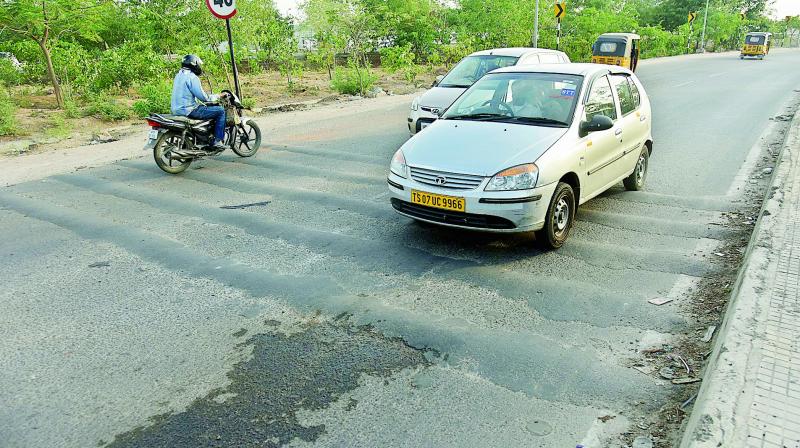Hyderabad: Unscientific speed breakers on service roads pose threat
Unlike the expressway, the service road does not have any speed guns to track and penalise speeding vehicles.

Hyderabad: Unscientific speed breakers on service roads along the 158-km Outer Ring Road (ORR) stretch have been posing a grave threat to commuters.
Unlike the expressway, the service road does not have any speed guns to track and penalise speeding vehicles. As a result, several non-fatal accidents have been reported along the stretch.
Officials claimed that the size of the speed breakers on the ORR service roads was double the size of conventional breakers, violating the Indian Road Congress (IRC) guidelines.
They claimed that the issue was under serious consideration and would be resolved at the earliest. Surprisingly, there are no speed guns to track violations on these roads. Further, driving on the deserted roads has been creating a sense of insecurity among commuters and the lack of surveillance has been encouraging commuters to drive fast, thereby violating the speed limit.
According to the IRC guidelines dated June 12, 1987, which hold relevance even today, speed breakers must be between 12-15 cm in width and 10 mm height irrespective of the material used. However, the speed breakers on said service roads are more than 30 cms wide and 20 mm high. According to highly-placed sources from the municipal department, there are over 10,000 unscientific breakers on service roads along Gachibowli-Narsingi-Shamshabad, Shamshabad-Pedda Amberpet, Narsingi-Patancheru, Patancheru-Gowdavalli, Kandlakoya-Shamirpet, Pedda Amberpet-Ghatkesar and Ghatkesar-Shameerpet.
The same has been verified by this newspaper.
Mr K. Lakshman Rao, the director and professor of the Centre of Excellence on Disaster Management, JNTUH College of Engineering Hyderabad, also a transport expert, said that conventionally, speed breakers should be a third of a lorry tyre in size and explained that this would not violate the IRC guidelines. He then mentioned about the deserted roads creating a sense of insecurity among commuters and about the lack of surveillance encouraging them to violate speed regulations. Besides rectifying the speed breakers, Mr Rao suggested that the authorities should use computer vision-based image processors to detect violations and penalise violators at the next point.
He said that unlike the exorbitantly priced speed guns, which cost anywhere between Rs 25,000 to Rs 2,50,000, the highly-sophisticated computer vision-based image processors can be bought at Rs 10,000 to Rs 12,000 and are already available at the JNTU.
The issue was taken to the notice of the Cyberabad DCP, traffic, S.M. Vijay Kumar. He said that the concern would be taken into consideration only after verifying the facts at the ground level. He further said that the traffic police would install speed trackers but asserted the issue pertaining to the speed breakers was the HMDA’s concern.

